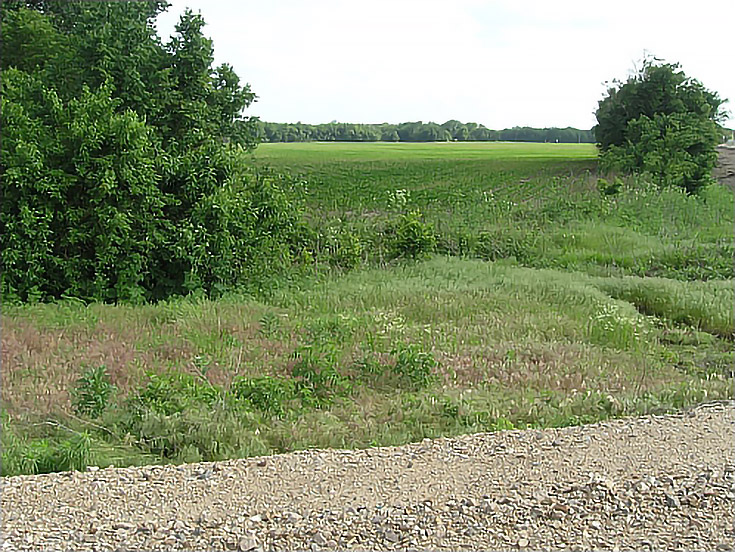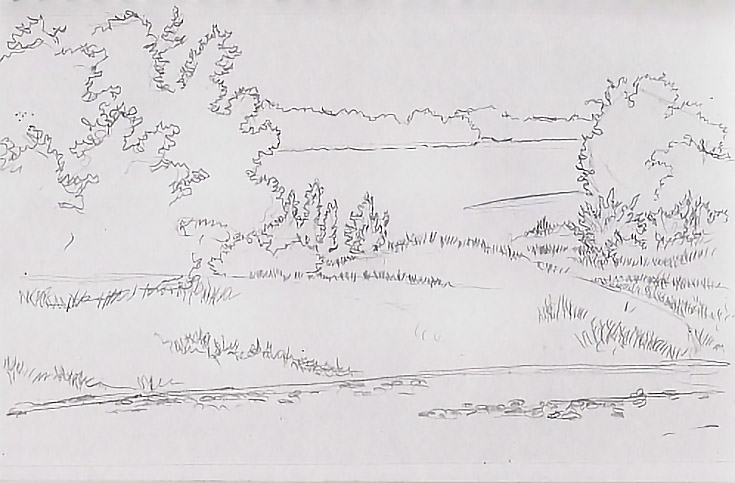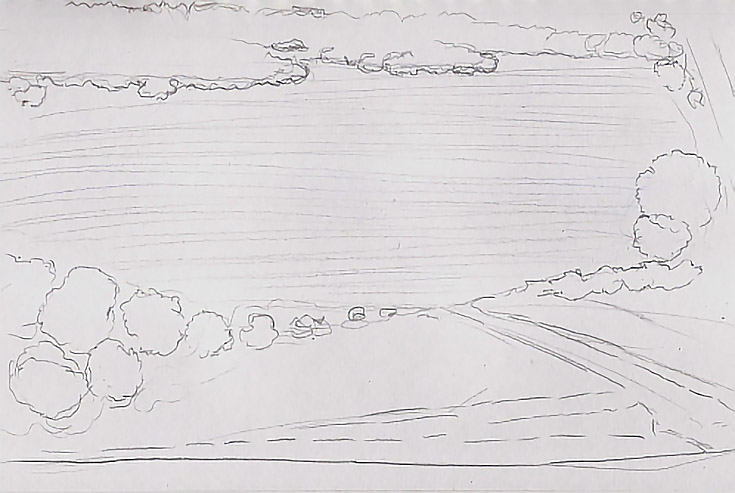drawing dead tree birds eye view
If you asked several landscape artists what you absolutely MUST get right when you're drawing a landscape, it's possible you'd get a few different answers.
But in my opinion, the most important thing is pictorial depth.
Pictorial depth is the illusion of three dimensional space on a two dimensional surface. Perhaps the best example of this is when an artist creates a picture that looks like it goes for miles into the distance, and you feel like you could just walk right into it.
While pictorial depth is certainly important for all kinds of artwork, it's especially important in landscape drawing. Without it, the most beautifully rendered trees, mountains, and skies remain flat and unconvincing.
How perspective adds depth to your drawings
Getting your perspective correct is key to creating convincing pictorial depth in any landscape drawing or painting. However, it's important to realize that there are actually three types of perspective!
Linear perspective is the method by which distance is measured and duplicated in a drawing or painting. With linear perspective, things close to the viewer appear larger than the same object seen from a distance. It's measured by using a horizon line, a vanishing point (or more than one), and all those diagonal lines we were forced to draw in art classes.
When you look at a landscape drawing with correct linear perspective, you can't help but interpret those "tiny" trees in the distance as far, far away.
Aerial perspective is the way that the air itself affects objects close and far. Distant objects are less clearly defined and less detailed than nearby objects. There is also less visible difference between the lights and darks in an object that is far off.
Chromatic perspective is the way that distance affects the appearance of colors. Colors viewed from a distance will be bluer and/or grayer than the same color viewed from nearby.
For a landscape artist, these kinds of perspective means the same tree viewed up close will not only appear larger (linear perspective) but it will show less detail (aerial perspective) and less color saturation (chromatic perspective). All three are necessary for stunning pictorial depth.
Introducing a birds eye point of view
Now that we're clear on the terminology of perspective, let's talk about the concept of a bird's eye view. Luckily, this is exactly what it sounds like—it means imagining (or viewing) your landscape subject from directly overhead.
What's the point, you ask?
By imagining the landmarks of your landscape from above, and drawing them on visual "map" as if seen from overhead, it is much easier to interpret how the elements of your landscape should look in relation to each other. In short, it's easier to see how your perspectives (linear, aerial, and chromatic) should change when viewing those landmarks from the ground.
Their placement in the three parts of the drawing (foreground, middle ground, and background) is also much clearer when you've completed a bird's eye drawing.
Creating a traditional landscape drawing
Here's a photo of the landscape I'm working from today.

First, I'll draw my landscape as a simple line drawing, using a basic graphite drawing pencil and drawing pad. Beginning with the road in the extreme foreground, I "drew" my way backward, drawing the trees on the left, then the trees on the right, and finally the distant trees. With those in place, I added the smaller details to flesh out the drawing.

Of course, it doesn't matter in what order you draw the landscape elements. That's just how I do it. It's more important that you find the process that works best for you and produces the best results and the most enjoyment.
Creating a birds eye view landscape drawing
The purpose of the bird's eye view is to give you a different perspective on the lay of the land you're drawing—so, on a fresh sheet of paper, begin drawing your composition as if you were looking down on it from a hot air balloon.
Again, it doesn't matter a great deal where you begin drawing. I started with the clump of trees on the left side of the foreground because they're the dominant element in the composition. But you could do equally well sketching out the general shape of the field first, then placing the trees, shrubs, grass, and road around them.
Here is my bird's eye view:

Even if it's not 100% accurate, seeing how a row of trees in the background relates to the field in front of them (and how much field there is between the background trees and the foreground trees) embeds in your mind the idea of linear space.
From my own drawing, I can see that the trees in the background are much further away than the tree on the right. And that tree is a little bit further away than the trees on the left, and a little bit further away than the grass beside the road.
The bird's eye view drawing is also an excellent compositional tool. For example, what if I made the field in the center of the bird's eye drawing larger? That would push the background trees further into the distance and I could then consciously figure out how to best draw or paint that change.
The same would be true if I decided to make the field smaller, or to make it a meadow and plant trees in it. Once I make changes to my composition from overhead, I can then draw those changes accurately in a more typical view.
In conclusion. . .
Can you draw a beautiful landscape without doing a bird's eye view? Absolutely.
Can you develop linear, aerial, and chromatic perspective without a bird's eye view? Yes. In fact, I've been doing that for years.
But what I learned from this exercise was that I had a better mental concept of how the foreground and background related to each other once I'd drawn my bird's eye view landscape. I'd never gotten that from even the most detailed and developed conventional drawing.
You don't need to do a bird's eye view, but it can be another fantastic tool in your drawing toolbox—one you may not wish to neglect when you're staring down a particularly tricky landscape.
Credit where credit's due
Today's tutorial is based on the online drawing class, Perspective in Landscape Drawing by Patrick Conners, and can be found online at Craftsy, along with hundreds of other classes. Each class is conducted as a virtual atelier, with students posting drawing assignments and interacting with each other and the instructor to improve landscape drawing skills.
This particular class is comprised of seven lessons, beginning with a basic introduction and concluding with a tone drawing in which Connors develops light masses, shadow masses, and mid-tone masses. The bird's eye view technique is just one of many demonstrated throughout the class.
EDITOR'S NOTE: Not only did Craftsy sponsor this article, but they've also partnered with EmptyEasel to give away this class for free! Enter to win it here.

This post may contain affiliate links.
vanhornthimirse97.blogspot.com
Source: https://emptyeasel.com/2014/05/10/how-a-birds-eye-point-of-view-can-improve-your-landscape-drawings/
0 Response to "drawing dead tree birds eye view"
Post a Comment